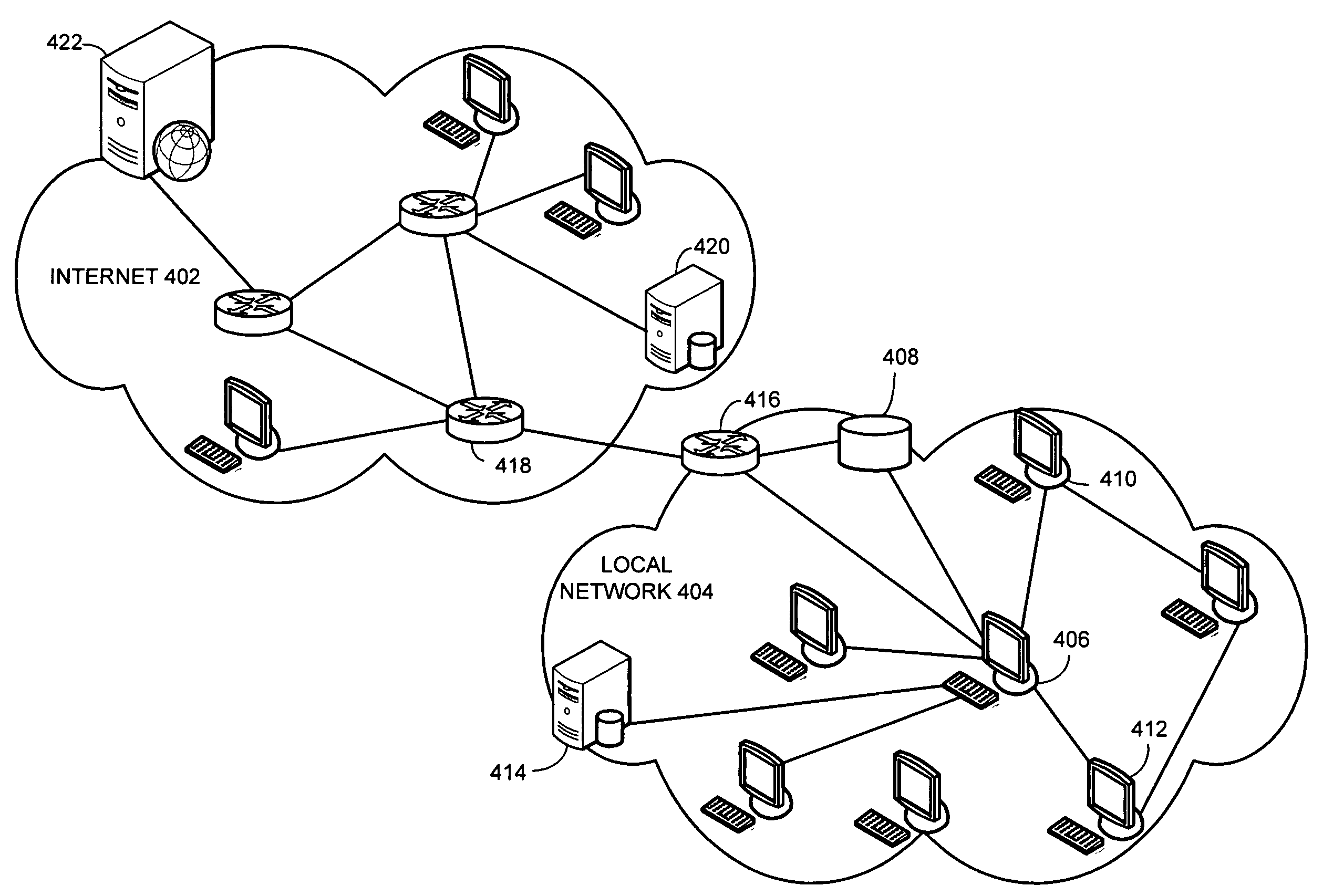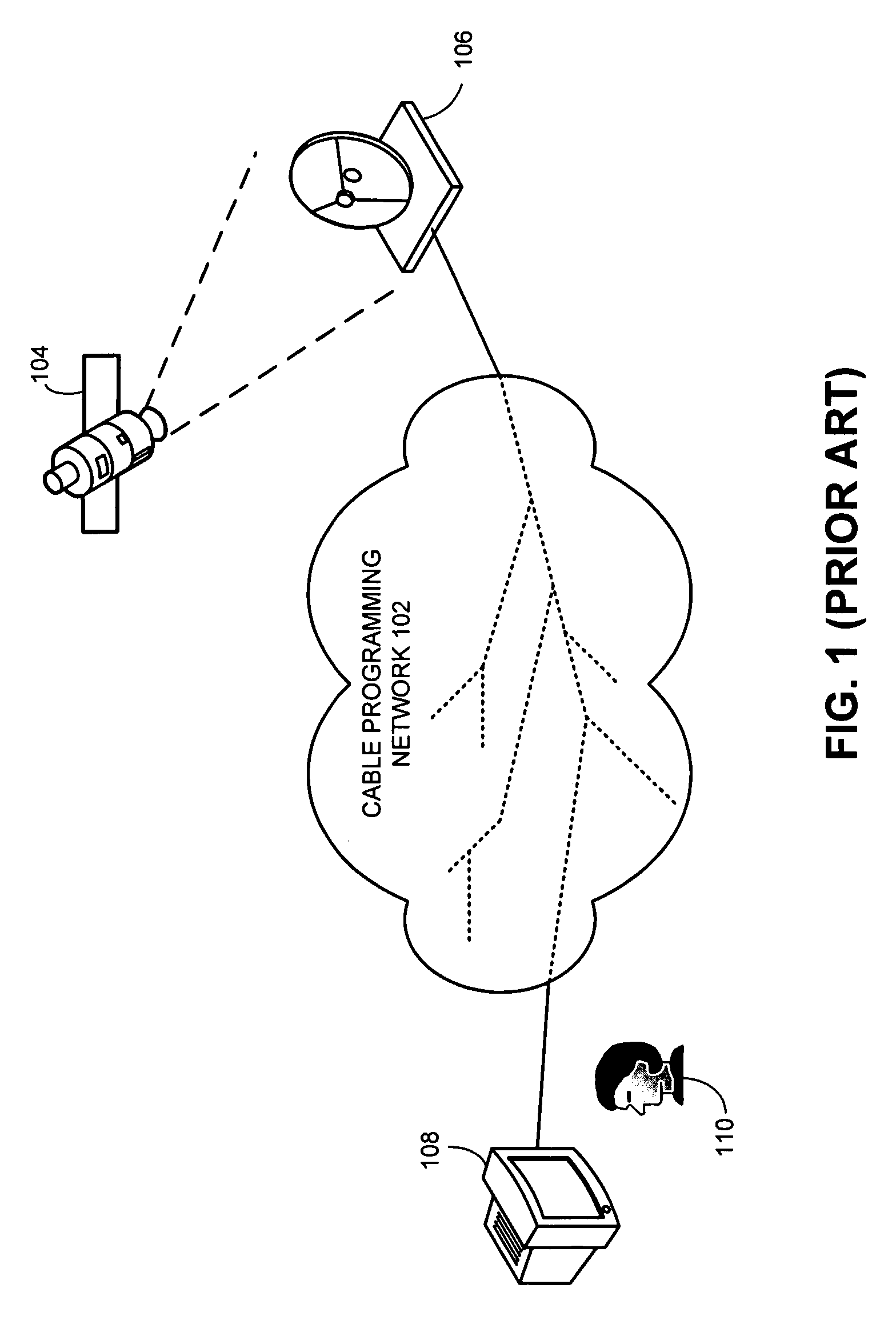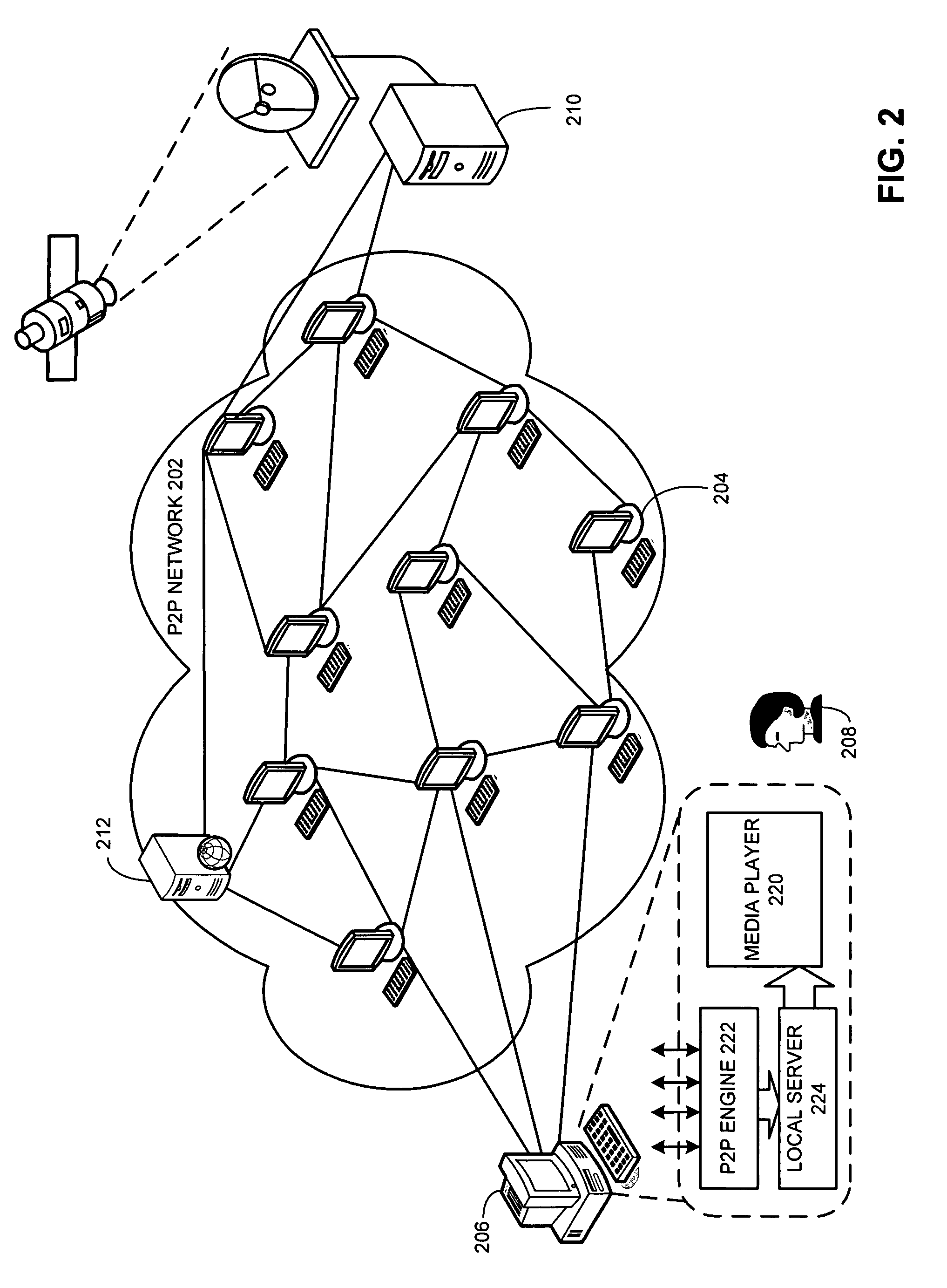Method and system for expediting peer-to-peer content delivery with improved network utilization
a peer-to-peer content and network utilization technology, applied in the field of peer-to-peer content delivery with improved network utilization, can solve the problems of inability to enjoy high-bandwidth audio or video content over broadband networks, the most bandwidth-demanding form of on-line content, and the inability of end-users to enjoy multi-media content. high-bandwidth audio and video conten
- Summary
- Abstract
- Description
- Claims
- Application Information
AI Technical Summary
Benefits of technology
Problems solved by technology
Method used
Image
Examples
Embodiment Construction
Delivery of TV Signals Over Cable Programming Networks
[0019]FIG. 1 illustrates a prior art conventional cable programming network 102 for delivering TV signals to end-users. The head-end of the cable programming network 102 is in communication with a satellite base station 106. The base station 106 receives signals for several TV channels relayed by a satellite 104. The base station 106 also encodes the received TV signals and transmits the signals onto the cable programming network 102.
[0020]The cable programming network 102 can be implemented over a conventional coaxial-cable network or an optical-fiber network. At the user-end, a copper coaxial cable typically carries the TV signals into an end-user's residence or office. A TV set or receiver 108 receives the TV signals and presents the media content.
[0021]Cable networks are usually formed in tree topologies to transmit signals downstream from the head-end to the tail-end. A coaxial cable can accommodate several TV channels simul...
PUM
 Login to View More
Login to View More Abstract
Description
Claims
Application Information
 Login to View More
Login to View More - R&D
- Intellectual Property
- Life Sciences
- Materials
- Tech Scout
- Unparalleled Data Quality
- Higher Quality Content
- 60% Fewer Hallucinations
Browse by: Latest US Patents, China's latest patents, Technical Efficacy Thesaurus, Application Domain, Technology Topic, Popular Technical Reports.
© 2025 PatSnap. All rights reserved.Legal|Privacy policy|Modern Slavery Act Transparency Statement|Sitemap|About US| Contact US: help@patsnap.com



